Web | 3D Printing Application | Startup
3DSlicer is a web application designed as part of my role in 3Ding in India. The application was ideated to connect 3D Printers via LAN/Internet by employing IOT fundamentals to achieve wireless slicing and fabrication of 3D models.
As a manufacturer and reseller of 3D Printers, 3Ding had identified that most customers who are using a 3D printer are first time user of an hardware/technology. The machines primarily sold in India were utilizing Cura- a open source application for slicing and printing 3D models and 3Ding supported and trained their users to establish best practices in designing, slicing, and 3D printing.
Yet, as the market matures, our technical support and marketing teams identified patterns of pain points which the consumers were facing after a specific period of product life cycle. Further research and discussion with few customers revealed that they find it difficult to remember the cumbersome process step involved in slicing, controlling and troubleshoot a 3D Printer.
Feedback from customers helped us to formulate a solution and a team was assigned to design and develop a intuitive user window to enable better user experience to 3D print.
Reports from marketing and customer support presented us with three possible difficulties that customers are facing with open source product.
Primary concerns:
To understand the concerns/hypothesis, we analyzed consumers data from sales, marketing, and support to identity the possible target user of our 3D printers and our Slicer application.
In order to understand individual usability issues, we selected few customers and workshop attendees for our user testing. Additionally, he created personas to understand common attributes within a user group and these attributes were used to create test cases to understand participants experience in using slicer’s interface.
Our research identified common issues which our customers are expecting us to address.
Summary:
We concluded that most customers are treating a 3D printer like a desktop printer which they are used to. Doing so, they are expecting a easier process with better user experience.
Initially, we started our work with six week sprint to brianstorm and identify technical constraints and I as a designer, I undertook design and validation of conceptual map as my first task.
We interview three participant and tested activity flow which as a user they intend to go through while using Octo-pi tool(open source).
Task tested
Case 1: Upload a .stl file from your local computer and slice
the file to obtain a 3D model with 100 micro accuracy.
Case 2: While printing, pause the process and recalibrate the machine to
access the troubleshooting menu.

I facilitated feedback sessions to document and sketch scenarios to identify and report anomalies to stakeholder and developers.
Calculated efficiency of tasks flows and determined rate of completion, lostness, and ease of use for file handling and machine operations to reconstruct the product’s conceptual diagram.
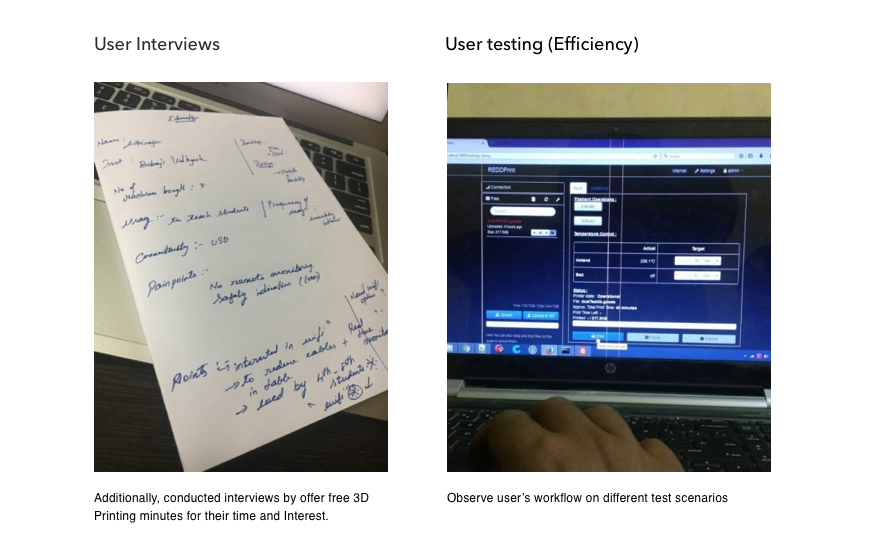
User testing and product requirement sheet led to a new task flow model and it includes machine operations, hardware calibration, and slicing. Additionally, the operation is divided into two phases as basic functions and advanced functions to reflect the hardware capabilites through digital interface.
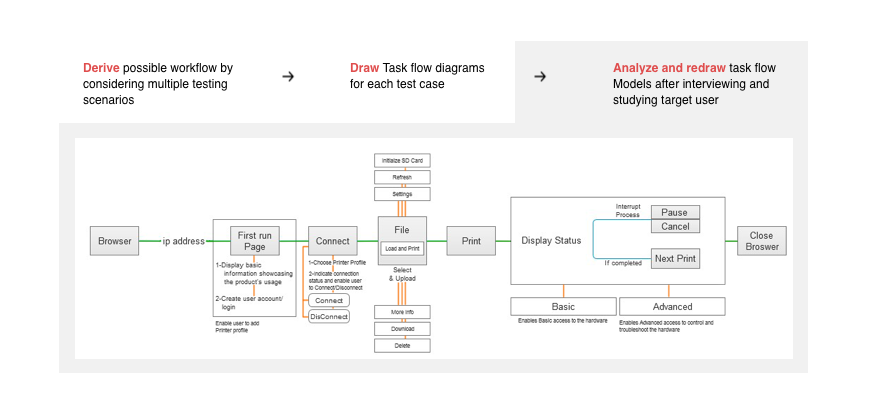
I followed traditional sketching to quickly check the UI constraints and developed a series of mock-ups. The user window was split into three sections to differentiate the tasks associated with each operation which a user would carry forward while interacting with a hardware and software.
Section 1: File handling view
Section 2: Status view
Section 3: Machine operation and slicing window along with application settings
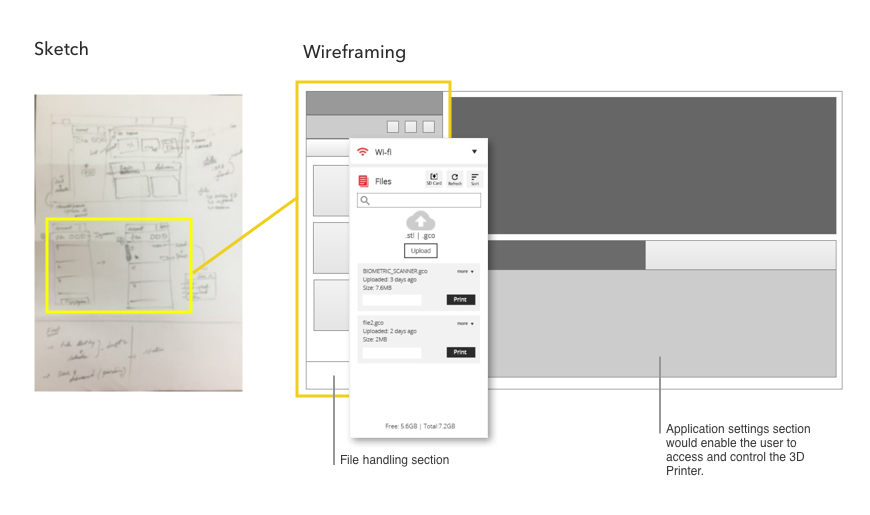
After four design sprints, we finalized the design presented below which would show the primary interactions that a user could operate with to successfully 3D print a model.
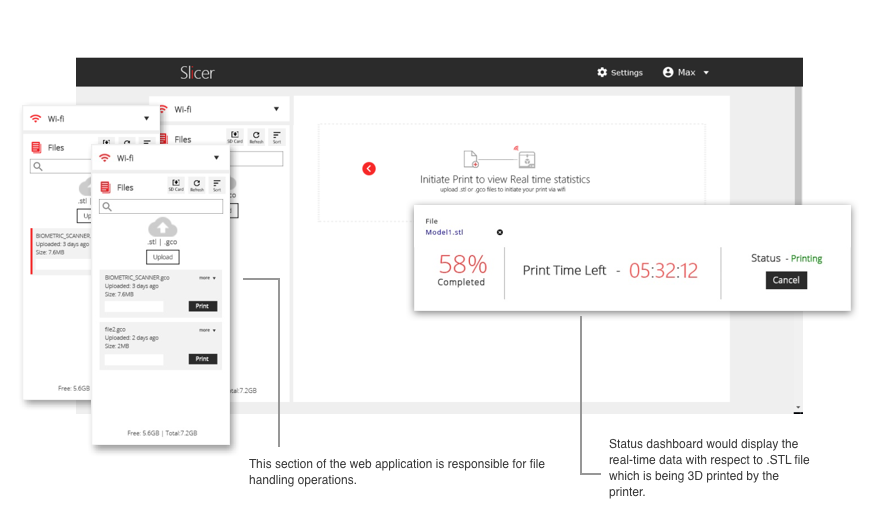
As a result, I designed and supported the delivery of Slicer application which would connect with 3D Printer wireless. The product was widely received among educational and research institutions
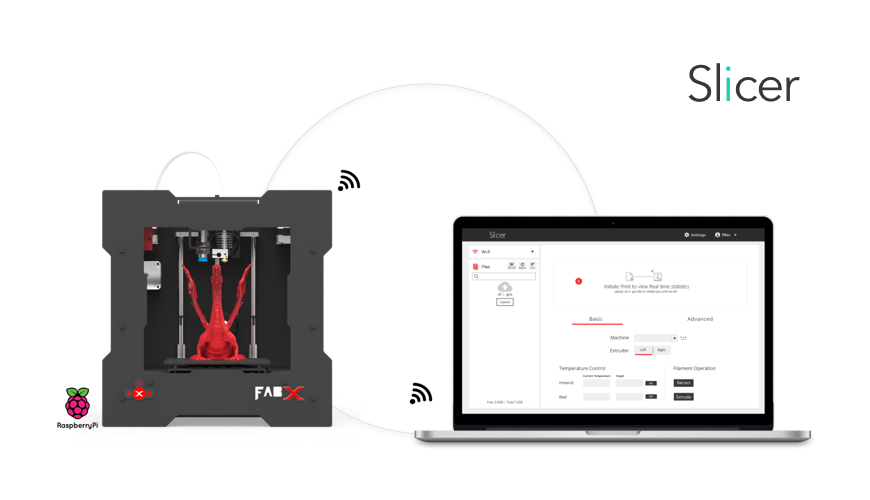
I actively collaborated and guided the design and development of Slicer application for three release cycles. Working with slicer project had let me working in interesting challenges in building web application that working alongside with hardware products.
Most importantly, this project helped me understand the usability constraints of web interface which mimics the user flow of using an hardware product.
Are you ideating on something for your users? I would love to help make it happen! Drop me a message and we could meet over a coffee to talk about your project.